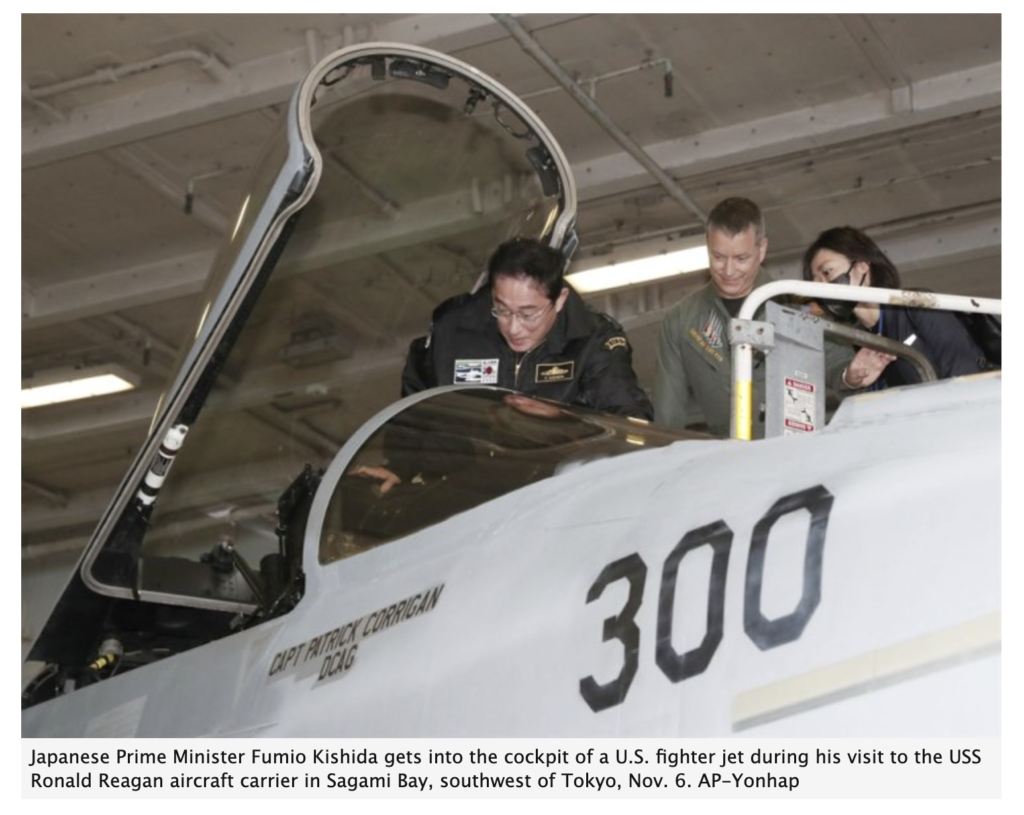
On December 16th, 2022, the Japanese government led by Prime Minister Fumio Kishida issued new “defense guidelines” that will give the country the ability to launch offensive attacks on enemy bases overseas for the first time since World War II.
The guidelines, fervently backed by the U.S. government and the DC think tanks representing the military industrial complex, are the last nails in the coffin of Japan’s Peace Constitution, which only allows Japan to take military action in self-defense. That document was imposed by U.S. Occupation forces after the war and has been in the cross-hairs of both the Pentagon and Kishida’s ruling Liberal Democratic Party since the 1970s.
The new “National Security Strategy of Japan” was spelled out in three key defense documents, and departs from the past in three critical areas. First, it declares that China is now Japan’s number one threat and poses “the greatest strategic challenges ever seen” in Tokyo. North Korea, which has traditionally been mentioned first as a hostile state, now represents a “severe and imminent threat.”
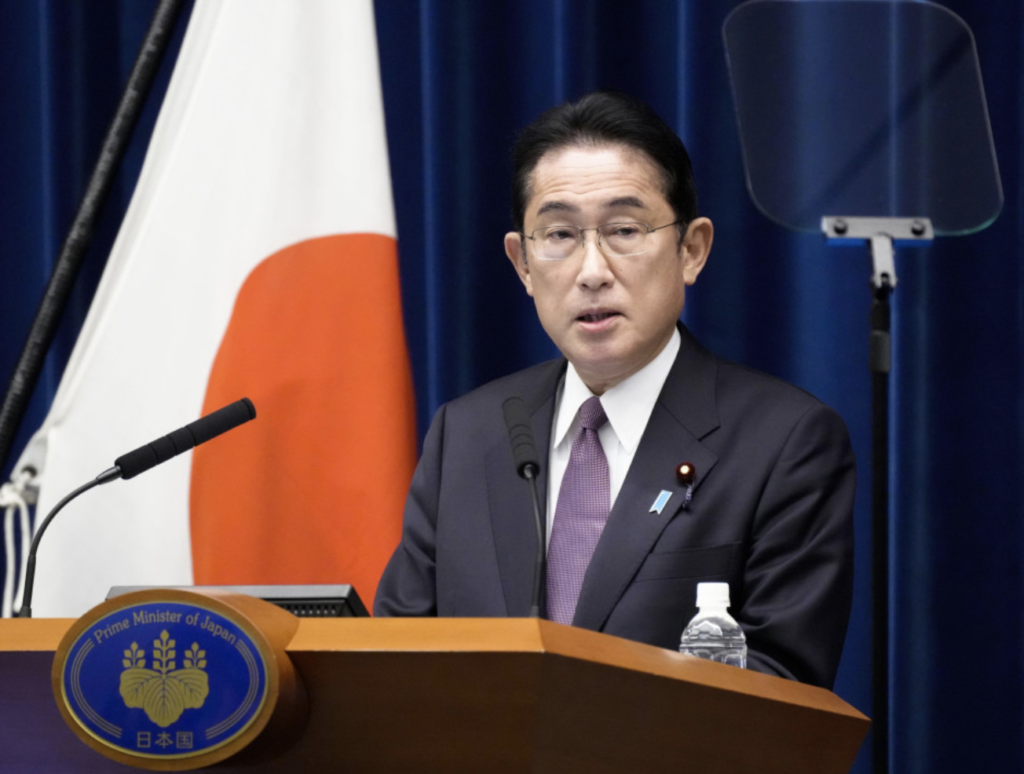
Second, it doubles Japan’s spending on its military – already one of the largest in the world – to over $350 billion, two percent of the GNP, over five years. It includes plans to strengthen the firepower of the Japanese Maritime and Air “Self-Defense Forces” (SDF) and upgrade Ground SDF units to prepare for emergency scenarios (meaning war) on Taiwan.
Third, it adopts a “counter attack” ability to hit enemy bases in China, North Korea, and elsewhere that could be applied if Japan is ever attacked.
“With the security environment surrounding Japan becoming unstable amid threats from China, North Korea and Russia, Tokyo, which has rejected warfare for the past 77 years, will be able to directly attack another country’s territory in case of an emergency,” Kyodo News explained. While the Constitution only allows Japan to act in self-defense, the National Security Strategy says the nation now needs the ability to “make effective counterstrikes in an opponent’s territory as a bare minimum self-defense measure.”
The NSS also includes controversial language that would allow Japan’s SDF to take offensive measures against any enemy force that threatened the United States. That change is “especially significant,” South Korea’s progressive Hankyoreh said, noting that the Kishida government has specified that its enemy strike capabilities could be applied not just in cases when Japanese territory is threatened but also in situations “where the U.S. is under attack.” Hankyoreh added:
For example, a North Korean attack on a US warship in the East Sea in an emergency on the Korean Peninsula could be deemed an “existential crisis,” where the JSDF would be able to strike against the North according to its “collective self-defense” rights if the US wishes. This means the possibility that peace on the peninsula could be instantly shattered by the decisions of Washington and Tokyo and Japan’s use of force, as the JSDF comes to insert itself in the peninsula’s affairs.
By further undermining the Constitution, the new policies expands the militaristic vision of the late Shinzo Abe for “collective self-defense,” a phrase that made Japan’s longest-serving prime minister a heroic figure in the eyes of Washington and leading politicians of both parties. In 2015, with strong U.S. backing, he pushed through legislation that now allows Japan’s SDF to take part in overseas military operations for the first time since World War II.
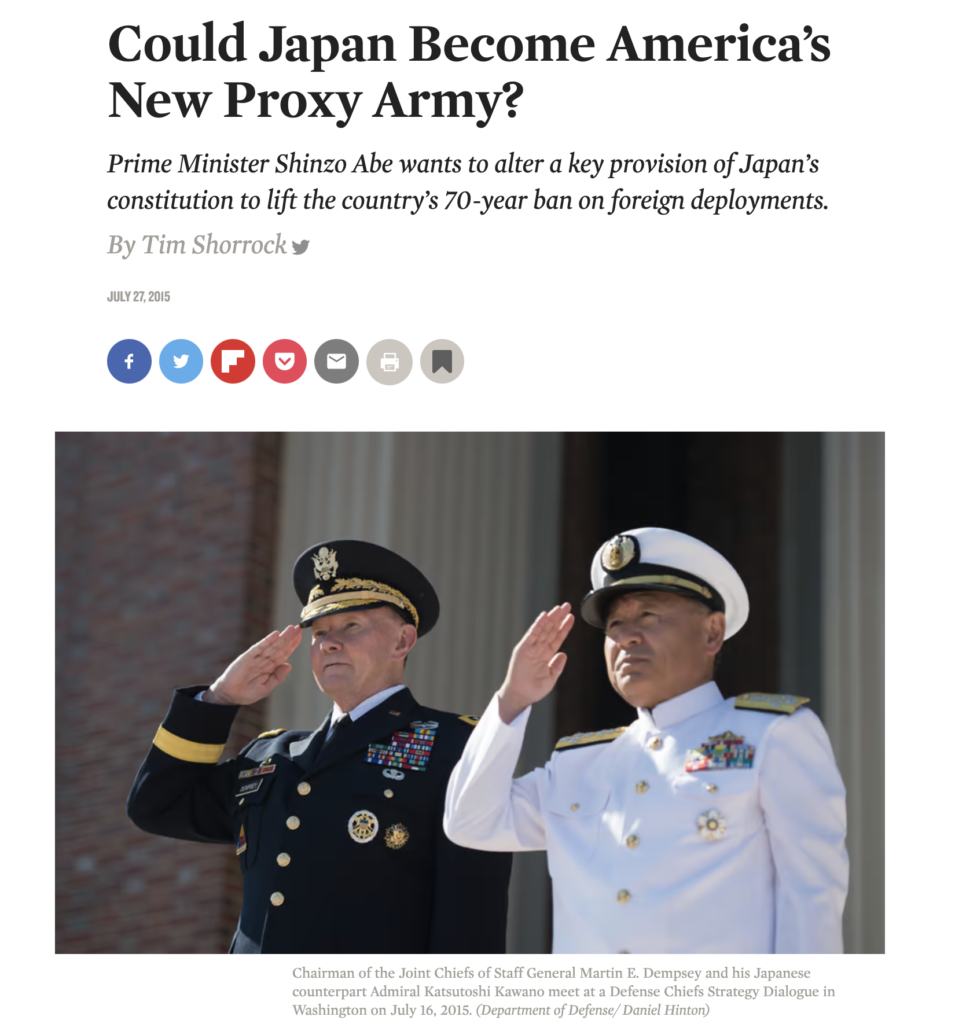
As I wrote in The Nation at the time, Abe’s victory transformed Japan – with its surprisingly large, tech-driven military-industrial complex – into “America’s new proxy army.” Kishida’s new policy takes that another step further, and will vastly increase US arms sales to Japan.
Before the ink was dry on the latest counter-strike documents, the Kishida government announced it will purchase hundreds of Tomahawk cruise missiles, the “flying torpedoes” that are among the most powerful and lethal weapons in the U.S. arsenal. The missiles, which are made by Raytheon Missiles and Defense, are launched from ships and submarines and “can strike targets precisely from 1,000 miles away, even in heavily defended airspace.”
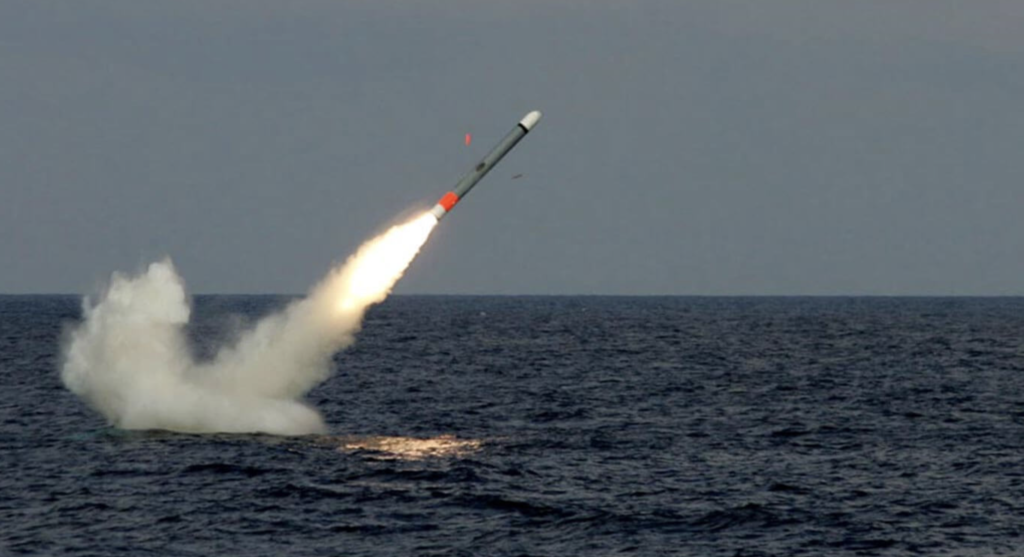
Biden administration offers lavish praise
The new policies were wildly applauded by the Biden administration, which dispatched its top security officials to Twitter to announced the change. First came the president: “We welcome Japan’s contributions to peace and prosperity,” he posted, calling the U.S.-Japan alliance “the cornerstone of a free and open Indo-Pacific” – a term originally coined by Abe himself. Jake Sulliven, his national security adviser, tweeted that Japan has taken a “bold and historic step.”
“Japan’s new documents reshape the ability of our Alliance to promote peace and protect the rules-based order in the Indo-Pacific region and around the world,” Secretary of State Tony Blinken declared in a special statement released by the State Department. “We applaud Japan’s commitment to modernize our Alliance through increased investment in enhanced roles, missions, and capabilities and closer defense cooperation with the United States and other Allies and partners, as outlined in these new documents.”
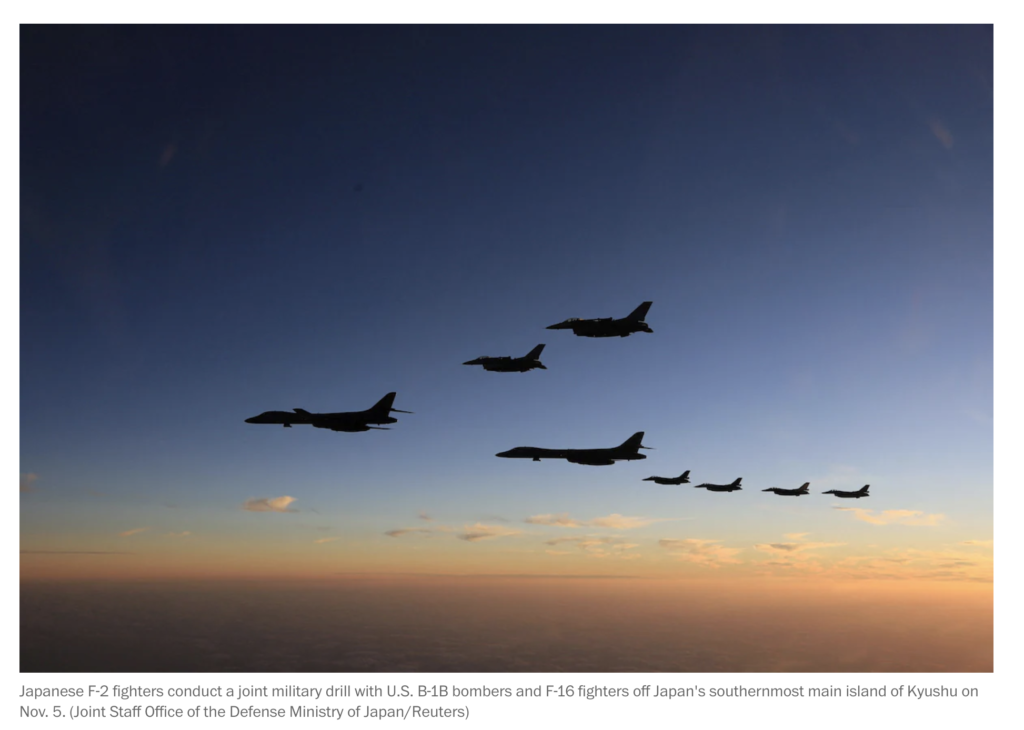
In Tokyo, U.S. Ambassador Rahm Emanuel went even further, telling Kyodo News in an exclusive interview that Kishida’s changes were “momentous” and “very much aligned with our vision.” He added that the Pentagon would fully cooperate with Tokyo in acquiring its counter-strike capabilities. Emanuel, a staunch hawk, told Kyodo that Japan’s moves to shore up its military had “unified” bipartisan and bicameral support inside the United States.
“With the exception of events such as Russia’s illegal invasion of Ukraine, no country has seen such a strong, unified show of support from Congress, the White House, and the administration as Japan has for its new defense policy,” he said.
That, in fact, is a blatant lie: there has been virtually no public discussion or debate in the United States about Japan’s steps towards militarism and their implications for the future of East Asia.
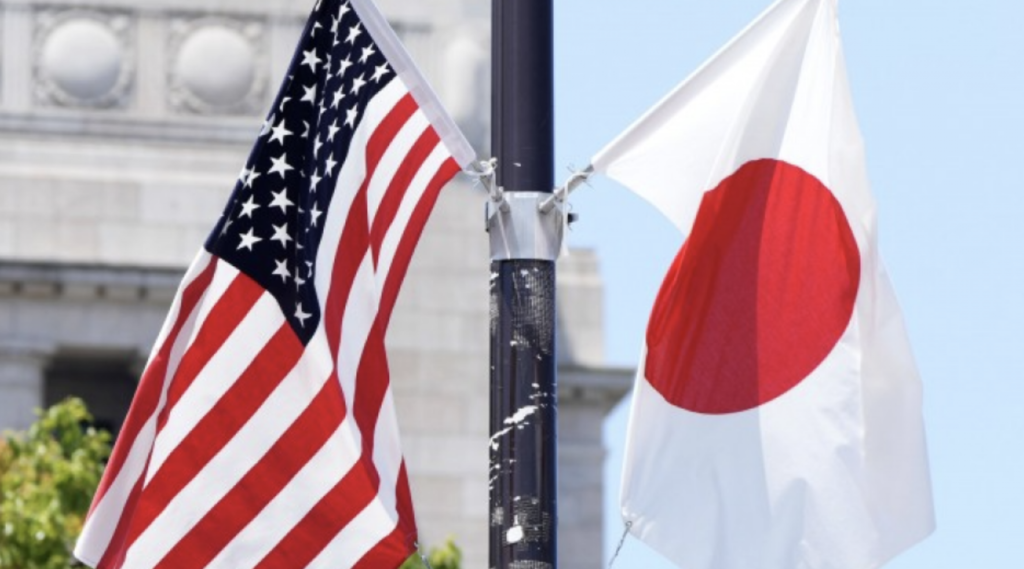
Just take a stroll through Twitter any day, and it’s easy to see that both the left and the right have zero interest in Japan’s new stance. And with few exceptions, the “monumental” events in Tokyo last week were barely mentioned in the mainstream media and virtually ignored by CNN and MSNBC.
The newspapers of record for the national security establishment, the New York Times and Washington Post, did run major features, but painted the changes as purely a defensive (and overdue) move by Kishida and the LDP. And in a cover-up of major proportions, they failed to mention the decades-long campaign by US military strategists to persuade Japan’s conservative government to rearm and enlist in America’s forever wars.
The Times described Kishida’s decisions as “the latest step in Japan’s yearslong path toward building a more muscular military and reducing its dependence on U.S. forces. After decades of resistance to the idea, recent polls show that over half of the country now supports at least some military buildup, amid China’s growing aggression toward Taiwan and Russia’s war on Ukraine.”
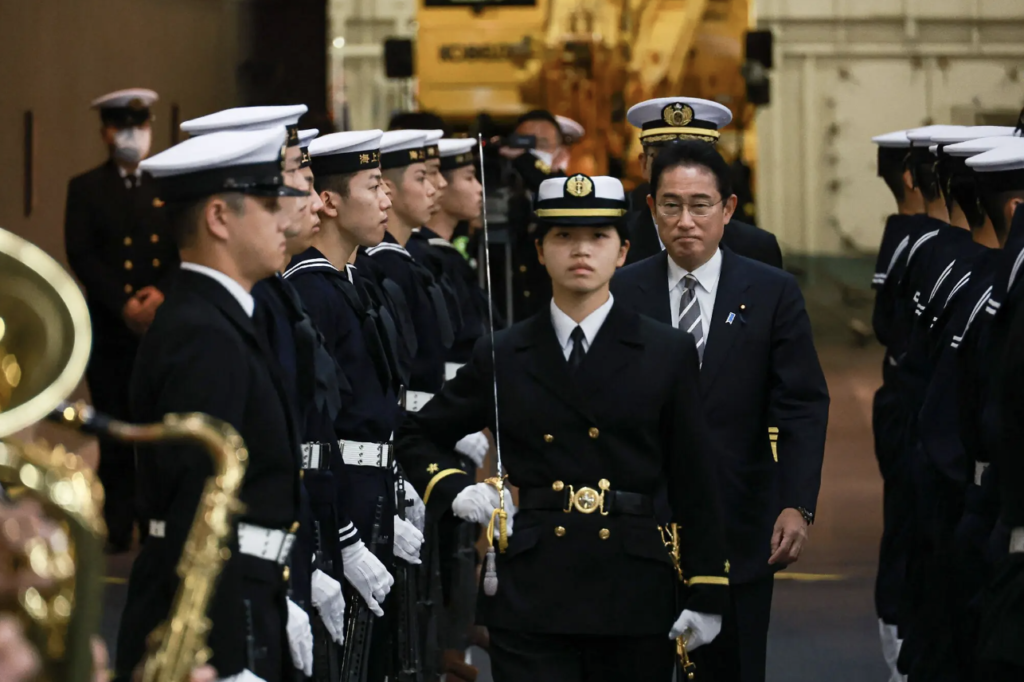
It does take a stab at outlining US pressure, but paints it as a reflection of Japan’s “maturity” as an alliance partner. The new strategy, the newspaper intoned, “was met with approval from Washington, which has long pushed Japan to take more responsibility for its own defense. Japan hosts the largest contingent of American troops overseas. Raising military spending to 2 percent of G.D.P. would bring Japan into line with pledges made by the members of the North Atlantic Treaty Organization.”
This is not how Japan’s military expansion was seen in Asia, however. Kishida’s new policies are not in synch with the views of many Japanese and are strongly opposed by all sides of the political spectrum in South Korea, which Biden and Blinken have been pressing to join its regional “Indo-Pacific” alliance aimed at China.
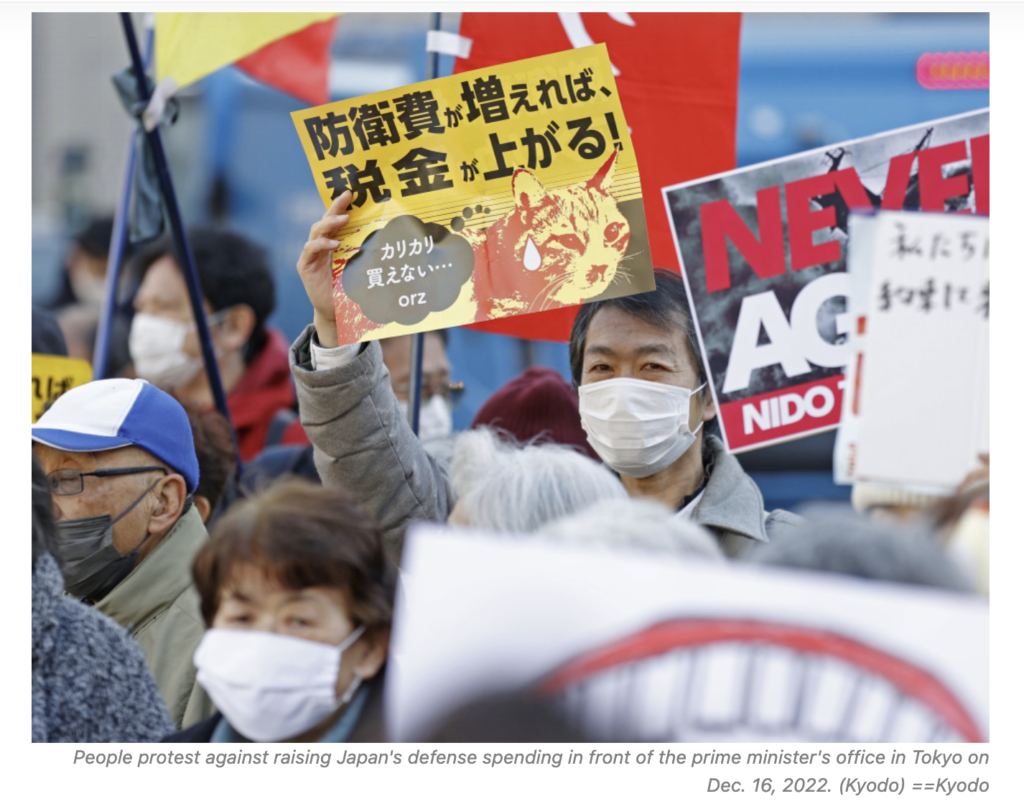
In the days following Japan’s announcement, protesters hit the streets in both countries. In Tokyo, hundreds gathered outside Kishida’s offices to lambast the LDP’s new enemy base strike capability, calling the move unconstitutional. As reported by the Mainichi:
“Military power does not create peace” were among chants that rang out from the morning in Tokyo’s Nagatacho district, as were those claiming the move goes against Article 9 of Japan’s Constitution, which renounces war…”The limits of the arms race are disappearing and danger of war is growing,” said 79-year-old Takehiko Tsukushi of Tokyo’s Kita Ward. “The United States, China and other countries concerned should find ways to compromise.”
Also protesting was a coalition of 15 groups called Heiwa Koso Teigen Kaigi, or Council on Peace Initiative proposals, which was established in October by Akira Kawasaki, the co-director of the NGO Peace Boat and other prominent activists. “There is an overwhelming lack of debate” about Kishida’s changes, Miho Aoi, a professor at Gakushuin University, declared. “We must take the issue of peace back into our hands. I strongly hope that this document will provide an opportunity for us to move forward toward building peace.”
In a stinging editorial, the left-leaning Asahi, one of Japan’s largest dailies, called Kishida’s plan a “radical and dangerous departure” from the past, and accused the LDP of “rushing headlong into beefing up the nation’s military muscle without developing plans or taking actions to improve the environment for building peace.” It also took issue with the new counterstrike capabilities, saying they would “eviscerate the nation’s long-established principle of sticking to a strictly defensive security policy. Doubling the nation’s defense spending could lead to an unrestrained military buildup.”
None of this was reported in the U.S. press.
The reaction in South Korea, now led by the ultra-conservative hawk Yoon Suk-yeol, was one of disbelief and anger. “We condemn Japan’s militaristic rearmament!” a coalition of civic groups chanted in a December 20 rally at the Japanese Embassy in Seoul. Newspapers from right to left were particularly concerned about Japan’s claim that it could unilaterally launch a counter-strike against North Korean missile launch sites without any consulation with the South.
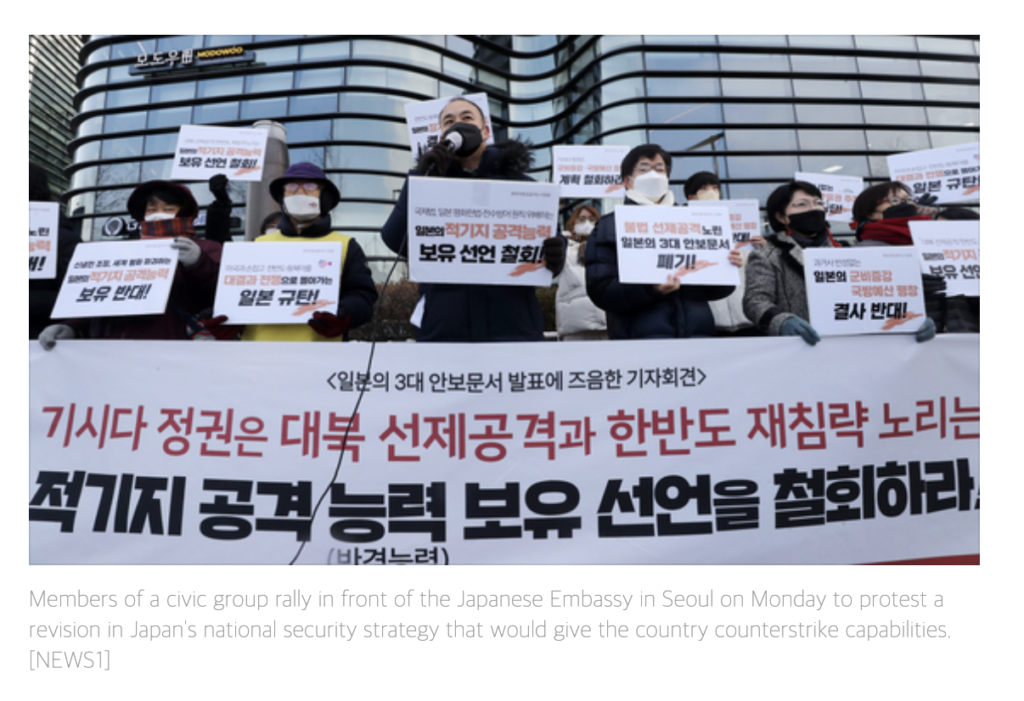
A “counterattack by Japan of targets on the peninsula could potentially be seen as a hostile act by South Korea given the wording of the constitution, whereby all of the Korean peninsula is seen as sovereign territory,” said the conservative JoongAng Daily. It noted that Article 3 of South Korea’s constitution declares that “The territory of the Republic of Korea shall consist of the Korean peninsula and its adjacent islands.”
The Korea Times echoed that sentiment. ” The South Korean government is advised to explore ways with the United States to stop Japan from deciding on its own to carry out an attack against North Korea, an act that could infringe on the South’s sovereignty.”
The Hankyoreh, in the story quoted earlier, zeroed in on the sovereignty issue as well. “How are we supposed to accept this reality in which Japan designates the Korean Peninsula — constitutionally, our sovereign territory — as a target for preemptive strikes?” it asked. “This is especially so for the Yoon administration, which talks more about freedom and solidarity than any government.”
Not surprisingly, both North Korea and China condemned Japan’s military buildup. The Chinese Embassy in Japan said the policy change will “only stoke regional tensions” and urged Japan to reconsider that “China and Japan are partners, not threats to each other.”
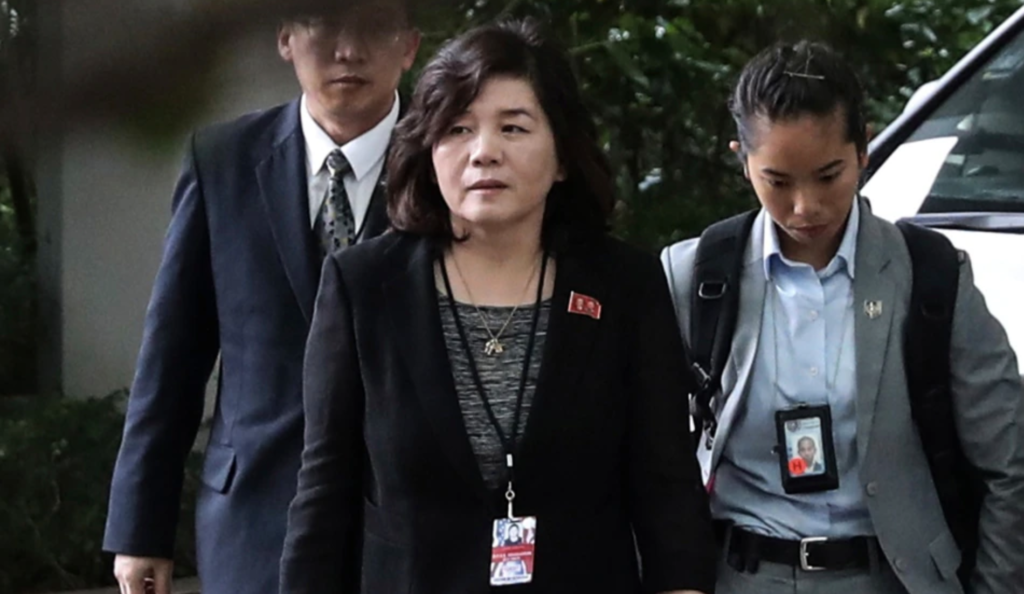
The DPRK’s foreign ministry, now led by the veteran negotiator Choe Sun-hui, declared that Japan had effectively formalised “the capability for preemptive attack” with its new strategy that would bring a “radical” change to East Asia’s security environment. It also criticised the U.S. government for “conniving and instigating Japan’s rearmament and reinvasion scheme.”
In fact, behind its flowery rhetoric, North Korea is correct about the US role. The “new” Kishida policies partly originated in Washington, which has been pushing Japan to become a bona fide military power for over 40 years.
That story will be told soon in a second article (this photo is a hint of what’s to come). Stay tuned!
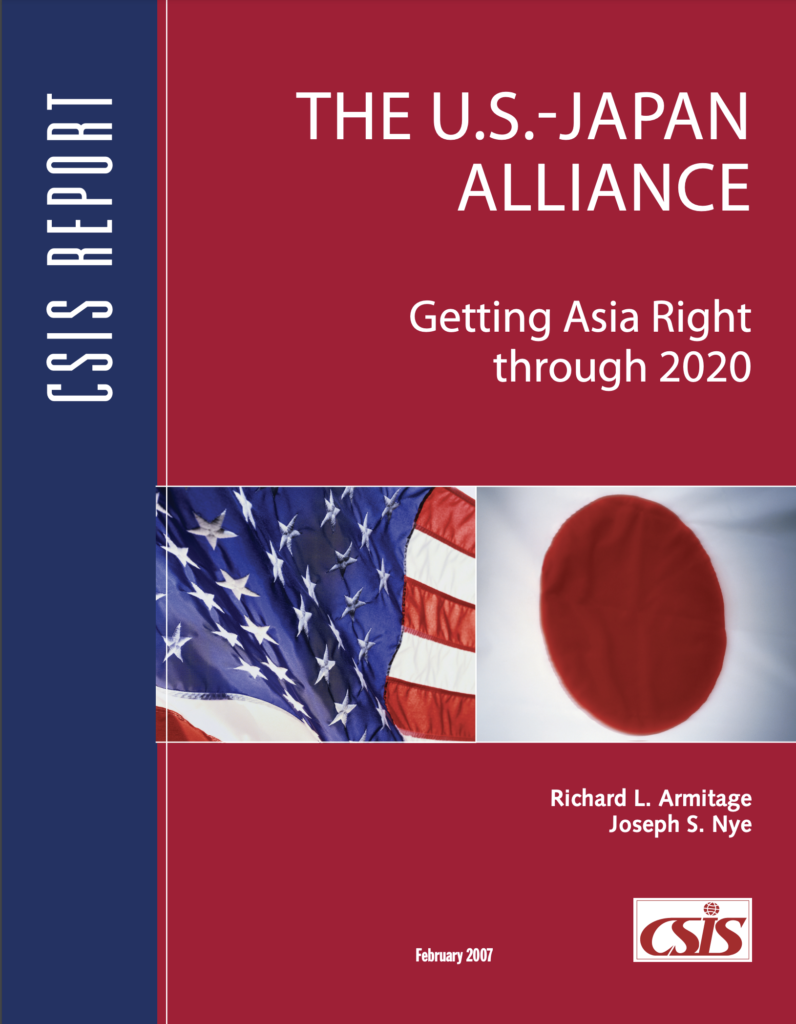

TIM SHORROCK
You are right when you write that bombing Nagasaki was aimed at USSR
Even bombing Hiroshima has no military efficiency contrary to mainstream historiography as Japanese military was already defeated and it was matter of time as it was negociating the conditions of surrender with Soviet Red Army. In the aftermath of the WWII, Truman regime planned bombing 76 major cities inside the USSR. In the current Ukraine war, the USA didn’t abandon its initial project of bombing Russian cities